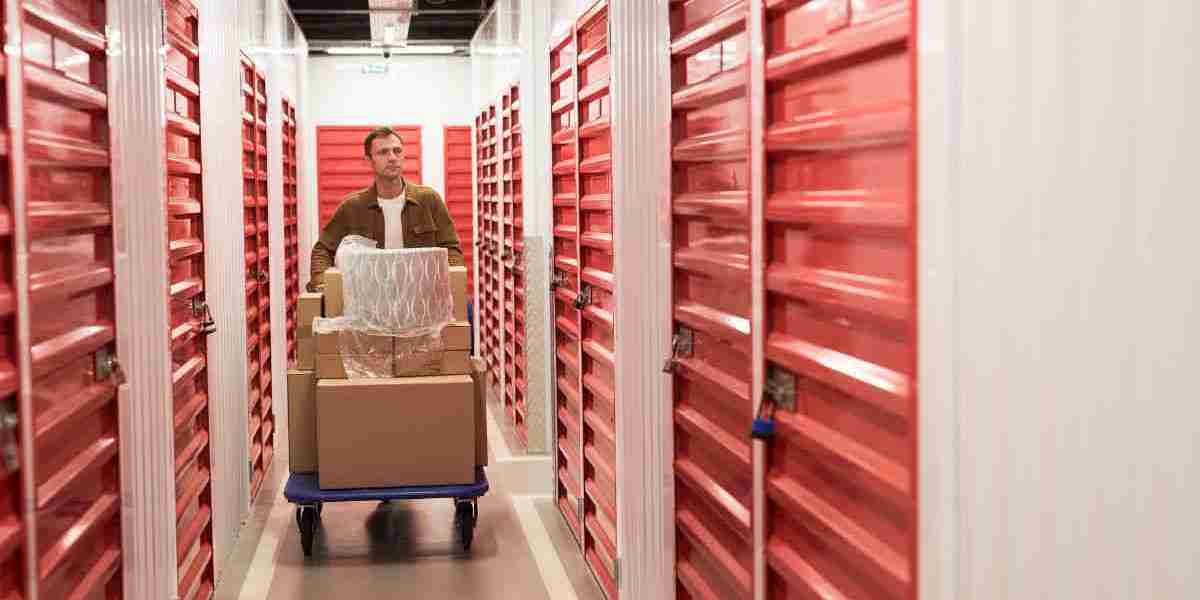The Australia self-storage market size, valued at nearly AUD 3.01 billion in 2024, is projected to experience substantial growth, driven by the increasing demand for secure self-storage facilities. With the increasing adoption of self-storage solutions by small and medium-sized enterprises, the industry is expected to grow at a robust CAGR of 4.30% from 2025 to 2034. By 2034, the market is anticipated to reach around AUD 4.59 billion, reflecting rapid population growth and increasing consumer preference for home renovations.
Overview of the Australian Self-Storage Market
The self-storage industry in Australia provides secure, rentable storage units for personal, business, and commercial use. These facilities cater to a broad spectrum of customers, from individuals needing extra space during home renovations to businesses requiring additional storage for inventory, equipment, and documents.
The market is characterized by a mix of large, national operators like National Storage and Storage King, as well as numerous local and boutique providers. With urbanization, rising property costs, and lifestyle changes, the demand for self-storage solutions has surged, making it an essential component of Australia's real estate and logistics sectors.
Key Drivers of Market Growth
Several factors are fueling the growth of the Australian self-storage market:
Urbanization and Space Constraints: As cities like Sydney, Melbourne, and Brisbane expand, the demand for storage space has increased due to smaller living spaces and limited room for personal belongings.
Rising Demand from Small and Medium Enterprises (SMEs): SMEs are increasingly relying on self-storage for inventory management, equipment storage, and archival purposes, driven by the flexibility and cost-effectiveness of these solutions.
Growth of E-Commerce: The booming e-commerce industry requires efficient storage solutions for inventory, order fulfillment, and distribution, contributing significantly to market growth.
Home Renovations and Relocations: Australians frequently engage in home improvements, renovations, and relocations, creating a temporary need for secure storage solutions during transitions.
Increased Focus on Security and Technology: Advanced security features such as 24/7 surveillance, smart locks, and climate-controlled units are enhancing the appeal of self-storage facilities.
Challenges in the Self-Storage Market
Despite its growth, the Australian self-storage market faces several challenges:
Intense Competition: The market is highly competitive, with numerous local and national operators offering similar services. This saturation can lead to pricing pressures and reduced profit margins.
High Operational Costs: Costs associated with property maintenance, security, and insurance can impact profitability, especially for smaller operators.
Regulatory and Zoning Issues: Local government regulations and zoning laws can restrict the development of new self-storage facilities, particularly in densely populated urban areas.
Consumer Behavior and Preferences: Shifts in consumer behavior, such as the growing trend towards minimalist living, may affect demand for storage units in the long term.
Impact of Economic Fluctuations: Economic downturns can reduce disposable income, affecting both personal and business demand for self-storage services.
Market Segmentation
The Australian self-storage market can be segmented based on storage type, end-user, and geographical region:
By Storage Type:
Personal Storage: Units for individuals to store household items, seasonal goods, or personal belongings.
Business Storage: Solutions tailored for businesses, including inventory management, document storage, and equipment storage.
Vehicle Storage: Specialized facilities for cars, boats, RVs, and other large vehicles.
Climate-Controlled Storage: Units with temperature and humidity control for sensitive items like electronics, art, and documents.
By End-User:
Residential: Individuals and families seeking extra space during life transitions or home renovations.
Commercial: Businesses using storage for inventory, supplies, and archival purposes.
E-Commerce: Online retailers requiring storage for products, packaging materials, and logistics operations.
By Region:
New South Wales and Victoria: High demand driven by large urban centers and growing populations.
Queensland: Expanding market in coastal regions due to increasing tourism and seasonal storage needs.
Western Australia and South Australia: Growth in regional areas supported by mining, agriculture, and industrial sectors.
Emerging Trends in the Self-Storage Market
Smart Storage Solutions: Integration of IoT, AI, and smart technologies for enhanced security, remote monitoring, and automated access control.
Flexible Storage Options: Growing demand for short-term and flexible rental agreements to cater to dynamic lifestyle needs.
Eco-Friendly Facilities: Adoption of sustainable practices, including energy-efficient lighting, solar panels, and eco-friendly building materials.
Mobile and Portable Storage Units: Increased use of mobile storage solutions for convenience, especially for residential moves and on-site business storage.
Integration with E-Commerce Supply Chains: Self-storage facilities are becoming key nodes in e-commerce logistics networks, supporting faster fulfillment and last-mile delivery.
Regional Insights in Australia
Sydney and Melbourne: Dominated by high-density urban living, driving strong demand for compact, secure storage units.
Brisbane and Gold Coast: Rapid population growth and tourism fuel the need for both personal and business storage solutions.
Perth and Adelaide: Expanding markets with opportunities in industrial storage and regional business support.
Regional Areas: Growing demand for agricultural equipment storage, seasonal goods, and community-based self-storage solutions.
Future Outlook
The Australian self-storage market is expected to continue its growth trajectory, driven by changing lifestyles, economic factors, and technological advancements. Key trends shaping the future include:
Projected Market Growth: With a CAGR of 4.30% from 2025 to 2034, the market is anticipated to reach AUD 4.59 billion, supported by increased demand from both residential and commercial sectors.
Technological Innovations: Enhanced security systems, smart storage management, and data-driven insights will transform operations and customer experiences.
Sustainability Focus: Green building practices, energy-efficient technologies, and eco-friendly materials will become integral to new self-storage developments.
Expansion into Regional Markets: Growth opportunities in less saturated markets, including rural and remote areas, where demand for specialized storage solutions is rising.
Diversification of Services: Facilities offering value-added services such as package receiving, workspace rentals, and logistics support will enhance their competitiveness.
Conclusion
The Australian self-storage market is undergoing a dynamic transformation, driven by urbanization, population growth, and evolving consumer needs. With an estimated market value of AUD 4.59 billion by 2034, the industry holds immense potential for investors, operators, and service providers.
As demand for flexible, secure, and innovative storage solutions continues to rise, the self-storage sector will play an increasingly vital role in Australia’s real estate, logistics, and personal care landscapes. The future of self-storage in Australia is promising, marked by growth, diversification, and technological innovation.





